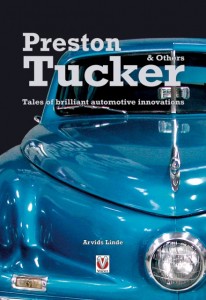Audi RS, History • Models • Technology
 by Constantin Bergander
by Constantin Bergander
“In case you, the reader, have not jumped past this section yet, I would like to thank you as well. Because this increases the odds that, along with the striking photographs, you will also honor the text with your attention. This describes the story of an automobile manufacturer that pulled itself together in the rough years, and evolved from bland fare to filet mignon. It is hard to believe that prior to this book, none had ventured to tell the tale. Now it is here—and I wish you great joy in the reading.”
How could you not smile at the choice of words, from the Foreword, in which the author establishes rapport with the reader? And you will still smile when you close the book, because it will have been a rewarding ride.
The US is Audi’s most important market but not all RS models make it to these shores. Nor do all books—that this new German book is also available in an English version is thanks to US publisher Dalton Watson thinking there’s a market for it here. If the sporty and luxurious RS cars haven’t caught your attention yet, this book will certainly impress upon you that you’ve been a snob.

Author Bergander (b. 1984) loves cars, and, apparently, words. That his cleverness comes across in English is a credit to the exceptional translation by Peter Albrecht who as an engineering consultant and automotive writer in his own right has just the right skill set. And if you do have the English version in front of you or on your radar, you can take pleasure in knowing that thanks to subtle but clever design tweaks (while retaining the page flow and basic layout of the German version published by Heel) the Dalton Watson version not only looks better but works better, because type and background colors or the placement of heads and the like aren’t merely decorative choices but affect readability. Behold:

We do concern ourselves with matters of design and typography so here is the same page in the German and the English version. Which one works better (and factor in that this is a right-hand page)?? There is a right answer . . .
Conceptually, Audi Sport GmbH, a private subsidiary company that looks after the high performance side at Audi AG, plays the role that AMG does at Mercedes-Benz or the M division at BMW. It wasn’t always thus so in that regard alone this book connects some useful dots on Germany’s automotive family tree: that first RS, the RS2 Avant of 1994, was co-developed with . . . Porsche. And they didn’t just share the wheel style or door mirrors but really put the “r” into racing and the “s” into sport! And all that on a premium-priced station wagon! The wrangling between the two companies over credit has really not been covered elsewhere in the literature.

So as to fully convey the technical sophistication of the RS the book begins with the Audi 100 “that barely kept the company alive” and Audi’s first stab, with the more luxurious 200 model, at orienting itself more towards Mercedes and BMW and away from Opel and Ford. The Quattro changed the game entirely, also and especially on the motorsports scene, and Americans were definitely starting to pay attention.

Thirty years of RS production means there is a lot of ground to cover. Development, design, trim levels, specs, variants = check, embedded into enough context to see the arc of progress. And “seeing” also on the photography side, with plenty of archival and marketing imagery as the book has been created in close cooperation with Audi. The coverage extends to the 2021 electric Audi RS e-tron GT, also including SUVs and RS versions of the TT line.
If Dalton Watson had been the lead publisher in this project there surely would have been an Index but at least there’s a detailed Table of Contents.

Copyright 2022 Charly Baumann (speedreaders.info)


 RSS Feed - Comments
RSS Feed - Comments






































































 Phone / Mail / Email
Phone / Mail / Email RSS Feed
RSS Feed Facebook
Facebook Twitter
Twitter